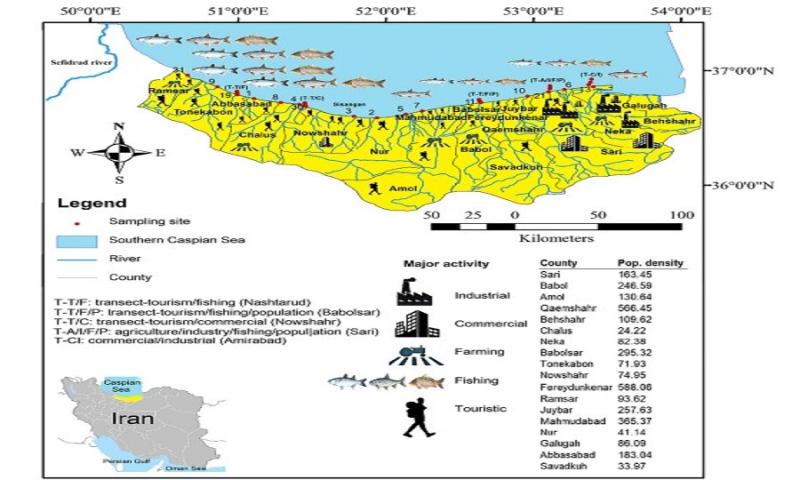Abstract: This study assesses the occurrence of trace elements (TEs) in sediments of the southern Caspian Sea. A total of 16 shoreline sediment samples and 15 seabed sediment samples along five coastal transects were studied. The mean concentration of TEs follows the order of Zn > V > Cr > Ni > Cu > Pb > Co > As > Sb > Mo > Cd. The TEs had an uneven, heterogeneous distribution within the shoreline and seabed sampling sites. This is due to that the study area comprises a large number of different pollution sources, also different sediment physicochemical characteristics. Levels of individual TEs within the seabed sediment transects were higher where their shoreline sites had higher concentrations, reflecting that the coastal sites play an important role in diffusing the contaminants towards the sea. The main anthropogenic source of TEs in this highly populated region, especially in the western part, is likely a large number of discharge points of greywater entering the sea. In addition, dominant fishing industry, tourism, intense agriculture, and textile and paper industry, as well as several other commercial activities, contribute significantly to the overall loading of TEs. Based on the statistical analyses, the organic matter and mud fraction had a strong explanatory value for the spatial variation of Cu, while oxyhydroxides of Fe and Mn had good explanatory factors to govern the spatial variation of other TEs. Pb and Zn had a relatively high partition coefficient (Kd), reflecting the affinity of these elements to be sorbed to the sediment phase. Cd and Sb had lower Kd, tending to remain in the aqueous phase. Geochemical indices indicated high enrichment of Cd, Sb, Zn, and Pb at a number of sampling sites, reflecting potential local sources of contamination. The Sisangan recreational area was identified as the most contaminated site. From a public health perspective, the non-carcinogenic risk of TEs was significant only at this site. The carcinogenic risks of Pb(II) and As(III) in adults, and Pb(II), Cd(II), and As(III) in children, were tolerable.

